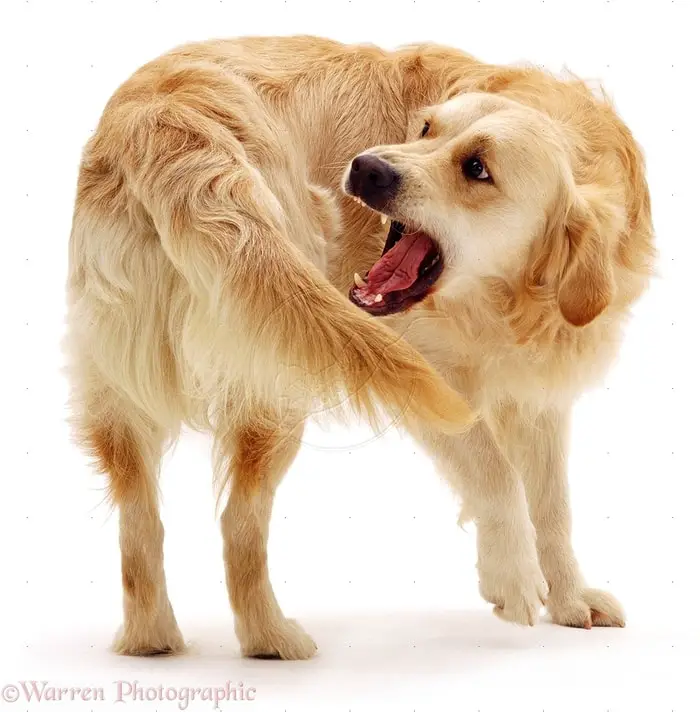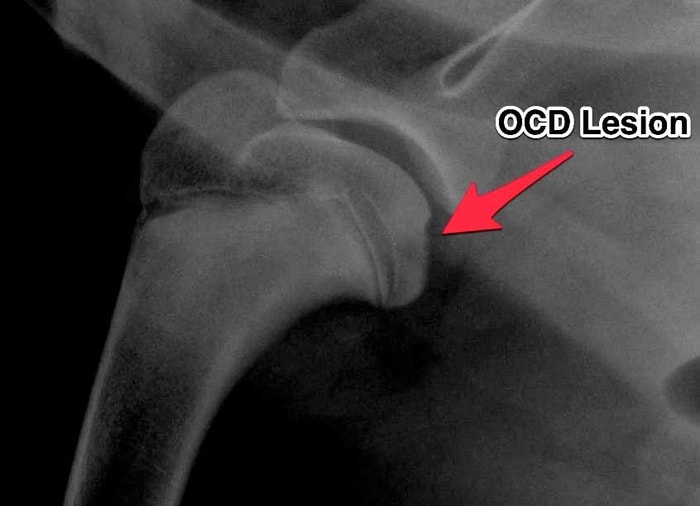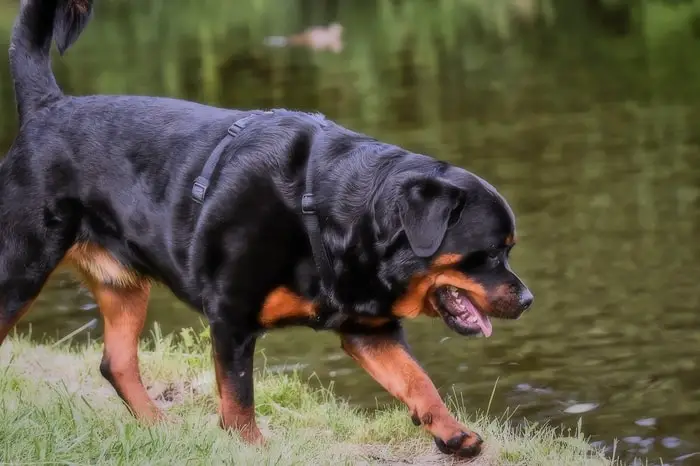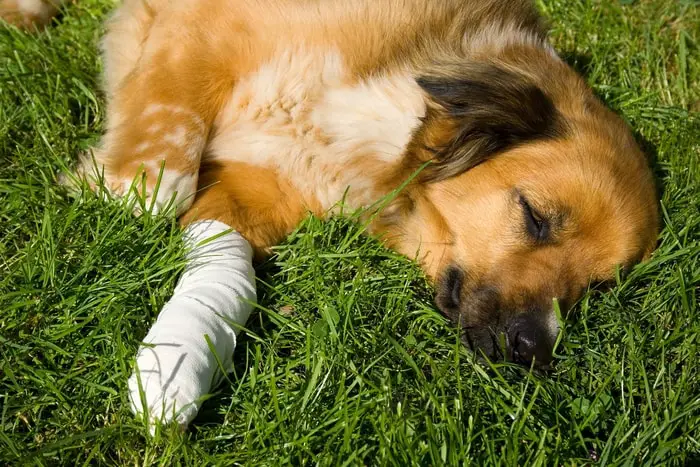Osteochondrosis in dogs is an endochondral ossification defect, the term denoting a dissecting lesion between articular cartilages and underlying bone. Once articular cartilage dissects free from the underlying calcified tissue, the lesion of osteochondrosis (OCD) has formed. It is a common condition of young and rapidly growing dog breeds.
Essential Information on OCD in Dogs
Osteochondrosis is a developmental disorder and affects medium to large breeds of dogs. OCD is characterized by abnormal endochondral ossification of epiphyseal cartilage in the elbow, shoulder, stifle, and hock joints. The exact cause of OCD in dogs is unknown but genetic, excessive nutrition, trauma, rapid growth are the main contributing factors.

Causes of Osteochondrosis In Dogs
The OCD in dogs caused by multiple factors, and the leading causes of osteochondrosis is considered to be in genetics. Therefore, genetics plays a significant role in the disease. Other causes of osteochondrosis include:
- Nutrition; calcium and phosphorus imbalance in the diet.
- Exercise; excessive exercise during the growing stage.
- The poor quality diet lacks essential minerals and vitamin D.
- Housing; congested and lack of exercise area.
- Environmental contributions.
- Trauma in bones and muscle.
- Age: Young and growing stage of life.
- Gender: Male dogs are more susceptible to disease due to over-activeness.
- Anatomic abnormalities of bones.
- Rapid growth due to excessive growth hormones.

Joints are Affected Osteochondrosis in Dogs
Any joints in the dog’s body may be affected by osteochondrosis. In dogs, the most probable joints are face to problems that are-
- Elbow joints.
- Shoulder joints.
- Stifle (Knee) joint.
- Hock (Ankle) joint.
What are the Symptoms of Osteochondrosis?
Clinical signs of lameness appear between four and 12 months of age, primarily in large and giant breeds of dogs. Bones affected include humeral head, medial humeral condyle, femoral condyles, and talus. The symptoms include-
- Joint popping.
- Joint weakness.
- Joint stiffness.
- Swelling of the affected joints.
- Tenderness of muscle and bone.
- Unable to fully straighten the affected limb.
- Joint effusion.
- Pain in the affected joint.
Which Breeds are Very Prone to Osteochondrosis?
It is a genetic and endocrine disease of dogs that primarily affects large, rapidly growing young dog breeds. This disease is more common in overactive male dogs, typically between 6 and 9 months of age. The breeds may include-
- Labrador Retriever.
- Rottweilers.
- Great Danes.

How Is OCD Diagnosed?
X-rays are the most common diagnostic procedure of osteochondrosis in dogs. The typical lesion appears radiographically as a flattened radiolucent defect in the subchondral bone immediately beneath the articular cartilage. Free-floating, mineralized cartilage fragments (joint mice) may also be present within the affected joints.

Differential Diagnosis of Osteochondrosis in Dogs
The disease may be confused with the following diseases:
- Intra-articular (Osteochondral) fractures
- Elbow dysplasia in dogs.
- Panosteitis.
- Periarticular ligamentous injury.
How is Osteochondrosis Treated?
Surgery is the primary treatment for osteochondrosis in dogs. Pain and lameness in a dog with radiographic evidence of osteochondrosis is an indication for surgical exploration. All loose cartilage fragments, including joint mice, are removed from the joint, and the lesion is curettage to stimulate the articular surface defect to heal by fibrocartilage formation. However, clinical severity is not correlated with radiographic findings.
Prognosis of Osteochondrosis in Dogs
Prognosis is based upon secondary changes. For example, shoulder and stifle lesions typically yield a better prognosis than elbow and tarsus lesions. Although not curative, NSAIDs are helpful to treat symptomatically the pain associated with DJD.